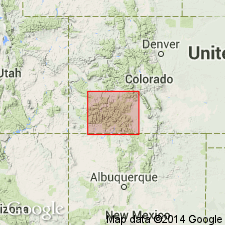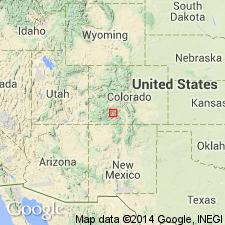
- Usage in publication:
-
- Huerto andesite*
- Modifications:
-
- Redefined
- Dominant lithology:
-
- Andesite
- AAPG geologic province:
-
- San Juan Mountains province
Summary:
[Credited to Larsen.] Changed name to Huerto andesite. [Included in Potosi volcanic series. Age is Miocene.]
Source: US geologic names lexicon (USGS Bull. 896, p. 992).

- Usage in publication:
-
- Huerto Formation*
- Modifications:
-
- Revised
- AAPG geologic province:
-
- San Juan Mountains province
Summary:
Thought by Emmons and Larsen (1923), Knowlton (1923), Cross and Larsen (1935, 1956) to have accumulated between eruption of Alboroto and Piedra Rhyolites. Authors believe Huerto erupted from separate centers in the central San Juan Mountains and that some rocks called Conejos Quartz Latite by Larsen and Cross (1956) are Huerto. Lies mostly southwest of Creede, CO in the San Juan Mountain province. Intertongues with Wason Park and Mammoth Mountain Rhyolites. Thickens and thins from place to place. More than 2,000 ft exposed on west face of Bristol Head. Assigned a middle to late Tertiary age, and of about the same age as the Mammoth Mountain and Wason Park Rhyolites, and as probably the same age as the Farmers Creek Rhyolite.
Source: GNU records (USGS DDS-6; Denver GNULEX).
For more information, please contact Nancy Stamm, Geologic Names Committee Secretary.
Asterisk (*) indicates published by U.S. Geological Survey authors.
"No current usage" (†) implies that a name has been abandoned or has fallen into disuse. Former usage and, if known, replacement name given in parentheses ( ).
Slash (/) indicates name conflicts with nomenclatural guidelines (CSN, 1933; ACSN, 1961, 1970; NACSN, 1983, 2005, 2021). May be explained within brackets ([ ]).

